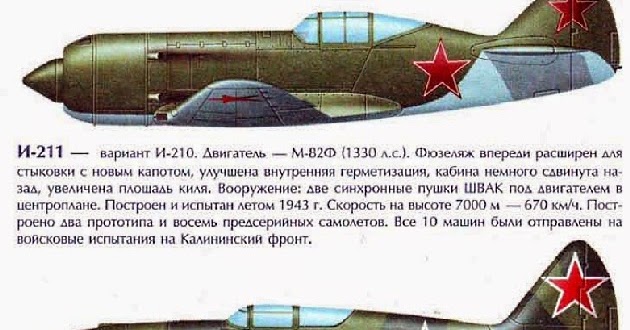BarnOwlLover
Staff Sergeant
Basically the ultimate Mikoyan/Gruevich (MiG) piston engine fighters. The I-225 for a time was the fastest Soviet piston engine fighter (though beaten by the Yak-3 M-108). The I-220 series are all very similar overall, though the I-220 though I-224 were primarily high altitude pursuit type interceptors. The I-225 was a more general purpose type, sort of along the lines of almost a hybrid of the Merlin-powered P-51 Mustangs and later Spitfires. All variants were powered by some variant of the Mikulin AM-42 V12 engine, better known for its use in the Ilyushin Il-10 ground attack aircraft, and was the ultimate versions of the Mikulin V12, which can trace the heritage of it's block and heads to the BMW VI of the 1920s. For use in the I-220 family, it was fitted with a turbocharger in addition to it's normal single stage supercharger (which was similar to what was used on the Allison V-1710).
All members of the I-220 family were armed with 4x20mm cannons and, especially the I-225, were high performance aircraft capable of performing well at all altitudes. The I-220 though I-224 were pressurized, while the I-225 wasn't. That is, when the turbo worked right.
Which is part of why I decided to put this here in the "what if" area. Mostly because it shows what the Soviets were ultimately capable of in terms of fighter design (the I-220s featured all metal monocoque construction and were fairly aerodynamically advanced), but also showed that the Soviets were behind in terms of engine and fuel tech (most Soviet fighters didn't use 100 octane fuel or effective two stage supercharging, hence had to rely on either lightweight aircraft, or big engines--the AM-42 was almost 47 liters in capacity and comprised nearly a 1/4 of the I-225's take off weight).
So let's discuss what impact the I-220s could've had, and maybe even how to improve them.

 soviethammer.blogspot.com
soviethammer.blogspot.com
Decent photos of the I-220 are rare, but here's some good renders made for War Thunder:


All members of the I-220 family were armed with 4x20mm cannons and, especially the I-225, were high performance aircraft capable of performing well at all altitudes. The I-220 though I-224 were pressurized, while the I-225 wasn't. That is, when the turbo worked right.
Which is part of why I decided to put this here in the "what if" area. Mostly because it shows what the Soviets were ultimately capable of in terms of fighter design (the I-220s featured all metal monocoque construction and were fairly aerodynamically advanced), but also showed that the Soviets were behind in terms of engine and fuel tech (most Soviet fighters didn't use 100 octane fuel or effective two stage supercharging, hence had to rely on either lightweight aircraft, or big engines--the AM-42 was almost 47 liters in capacity and comprised nearly a 1/4 of the I-225's take off weight).
So let's discuss what impact the I-220s could've had, and maybe even how to improve them.

MiG Fighter Aircraft Development WWII
I-211 After operational tests of the MiG-3 powered by the M-82, produced in a small batch of five aircraft designated MiG-9 M-82, one ...
Decent photos of the I-220 are rare, but here's some good renders made for War Thunder:
